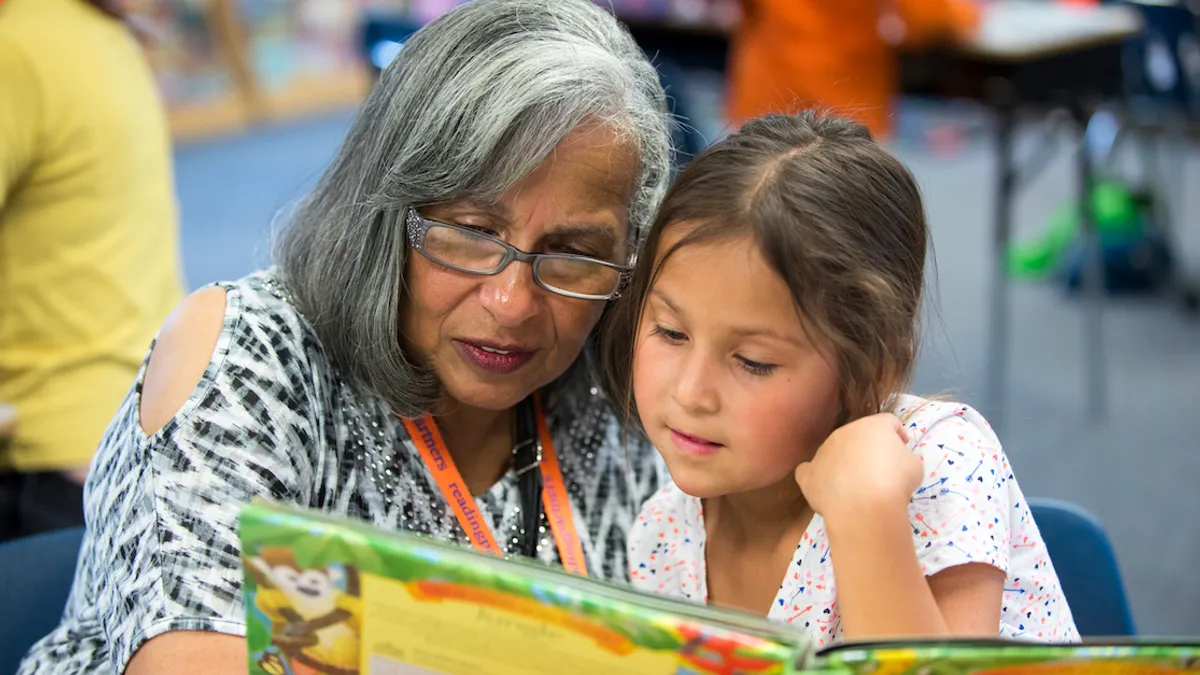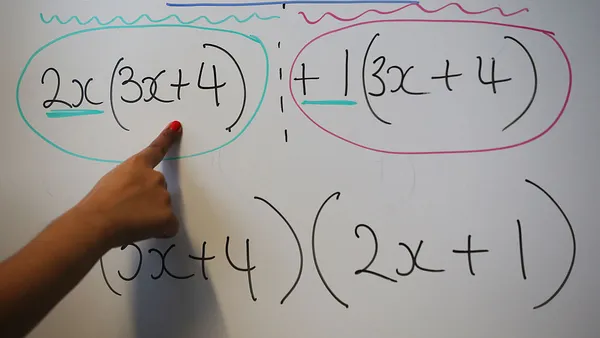Dive Brief:
- Middle school language arts and social studies teacher Kasey Short reads for five minutes each day at the start of class. Short considers the time, and reading, a “gift” for her students, she wrote in Edutopia.
- As she looks for books to read to her students, Short selects titles that bring up topics she can discuss in class, often stories that show diversity in a way not typically depicted, such as “Same Sun Here" by Silas House and Neela Vaswani. While she typically uses novels, Short will also bring in picture books.
- Short uses different strategies as she reads aloud — including thinking aloud, questioning and visualizing text — skills she hopes her students will adopt as well.
Dive Insight:
Even for middle school students with strong reading skills, reading aloud in class can offers benefits, according to a 2013 study by researchers Jennifer Kohart Marchessault and Karen H. Larwin, published in the Contemporary Issues In Education Research. Their findings showed increases increase in vocabulary and comprehension scores on the Diagnostic Online Reading Assessment for middle school students who participated in instruction where teachers read out loud.
This kind of instruction may also help students who lag in the development of other skills including critical-thinking, according to the Center for Teaching, part of the Office of Teaching, Learning and Technology at The University of Iowa. By listening to the way an instructor reads text, and what they emphasize, students can pick up what a passage means, the authors wrote. These skills become more necessary as students are assigned longer and more challenging texts in high school and college.
Having students read out loud can also be impactful. The nonprofit Facing History and Ourselves suggests a number of ways to bring reading aloud into classrooms, including using something it calls “popcorn style” where one student stops reading, and another immediately starts. Reading Rockets, a national literacy group, also suggests pausing during a story and asking students questions about how a tale relates to their own lives, to help foster more critical thinking skills. Both are methods educators and curriculum designers, looking to add more of these opportunities into classrooms, can use.
Another model, Reading Apprenticeship, emphasizes building on students' background knowledge when they read and having teachers demonstrate the skills they use when faced with unfamiliar material. WestEd, which developed the model, offers resources for download.













